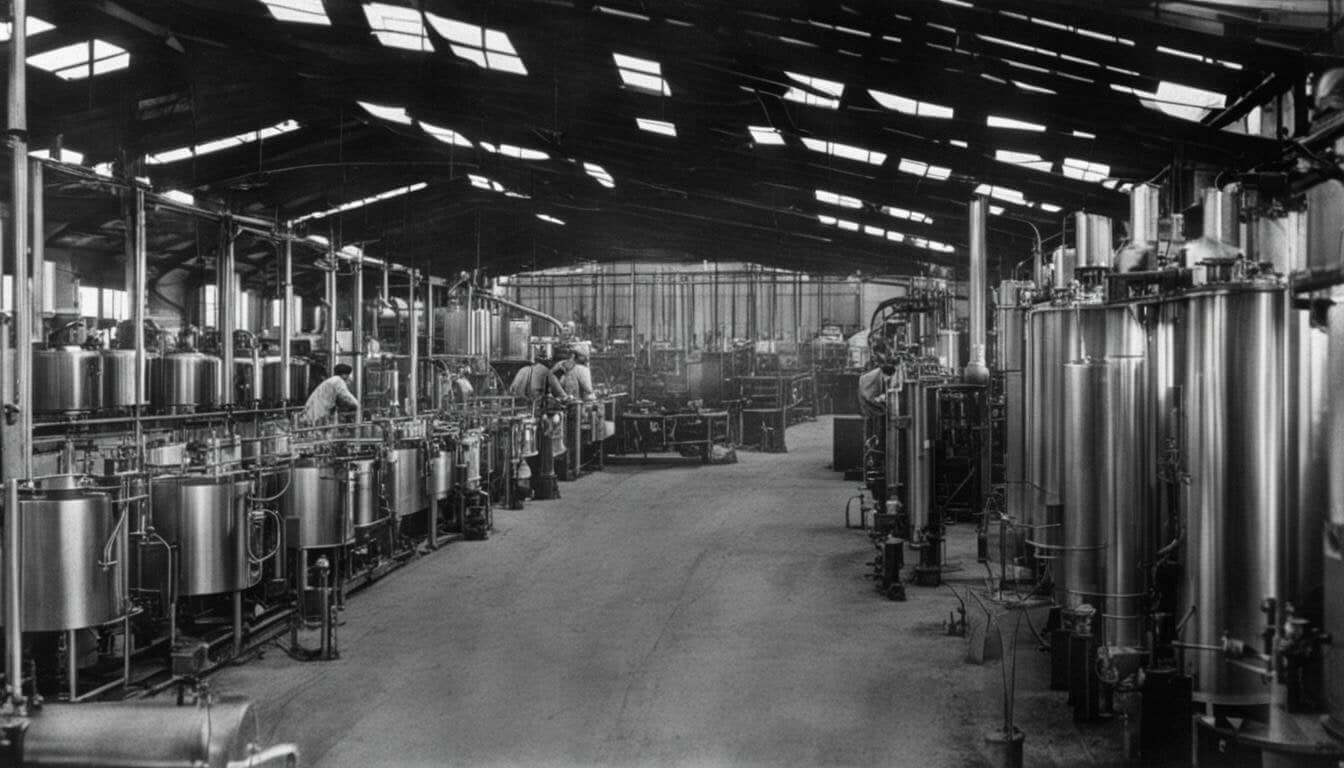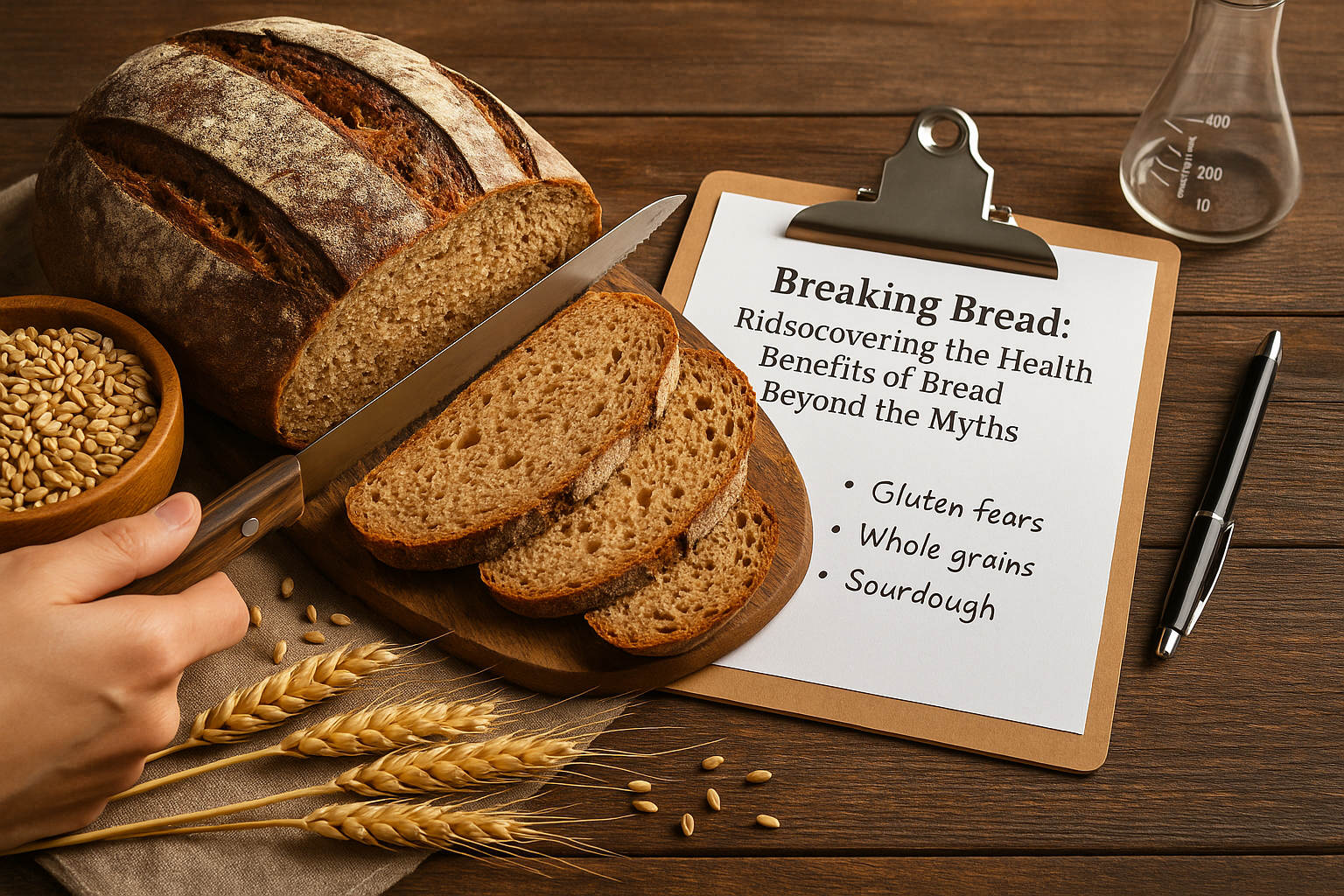
How is Gelatin Made
SUBSCRIBE TO OUR BLOG
Promotions, new products, and recipes.
Gelatin, a versatile ingredient used in a wide range of applications, is derived from collagen found in animal body parts such as bones, skins, and tissues. This protein substance undergoes a meticulous manufacturing process, involving several stages, to obtain the final product that is widely consumed and utilized in various industries.
Key Takeaways:
- Gelatin is derived from collagen extracted from animal body parts.
- The manufacturing process includes inspection, cutting, degreasing, roasting, acid and alkaline treatment, boiling, evaporating, grinding, flavoring, and coloring.
- Gelatin is used in food processing, pharmaceuticals, photography, and paper production.
- Strict regulations ensure the safety and quality of gelatin production.
- Gelatin offers health benefits and is compared to collagen.
Gelatin Extraction and Preparation
Gelatin extraction involves a meticulous process that distinguishes between bovine and porcine gelatin, and also offers variations such as hydrolyzed gelatin and different types of gelatin grades. Bovine gelatin is derived from the collagen found in cow bones, while porcine gelatin is sourced from pig skin and bones. The extraction process begins with the selection and inspection of high-quality animal parts, which are then carefully cut into smaller pieces.
After the initial cutting, the gelatin undergoes a degreasing and roasting process to remove any excess fats and impurities. The next step involves subjecting the gelatin to acid and alkaline treatment, which helps break down the collagen into its gelatinous form. This process is crucial in order to achieve the desired gel strength and texture.
Once the acid and alkaline treatment is complete, the gelatin is boiled to further extract the collagen proteins. This is followed by evaporating and grinding the gelatin to create a fine powder, which can then be used in various applications. To enhance the flavor and appearance, flavorings and colorings may be added to the gelatin before it is packaged.
The gelatin industry offers different types of gelatin grades, each with its own unique properties and applications. For example, hydrolyzed gelatin undergoes additional processing to break down the proteins into smaller peptides, resulting in improved solubility and faster gelation. These different grades of gelatin provide versatility in terms of texture, setting time, and usage in various industries, such as food processing, pharmaceuticals, and cosmetics.
Gelatin Extraction and Preparation
In the process of gelatin extraction and preparation, utmost care is taken to ensure the quality and safety of the final product. This is achieved through rigorous inspections, adherence to strict manufacturing standards, and regular quality control measures. The gelatin industry is regulated by governing bodies to enforce compliance with production regulations.
| Gelatin Type | Source |
|---|---|
| Bovine Gelatin | Derived from cow bones |
| Porcine Gelatin | Sourced from pig skin and bones |
| Hydrolyzed Gelatin | Processed for improved solubility |
| Various Grades | Different properties for diverse applications |
The extraction and preparation of gelatin is a complex and meticulous process that ensures the production of a versatile ingredient with wide-ranging applications. From culinary delights to pharmaceutical formulations, gelatin offers unique properties and benefits in various industries, making it an essential component in numerous products.
Gelatin Production Stages
Gelatin undergoes several stages of production, starting with the inspection and cutting of animal parts and progressing through various processes like degreasing, roasting, acid and alkaline treatment, boiling, evaporating, grinding, and finally, flavoring and coloring. Each stage plays a crucial role in transforming collagen into gelatin, a versatile protein substance used in a wide range of industries.
During the inspection and cutting stage, animal body parts such as bones, skins, and tissues are carefully examined and prepared for further processing. This step ensures that only high-quality materials are used in gelatin production. Once prepared, the animal parts undergo degreasing and roasting, a process that removes unwanted fat and impurities.
Next, the gelatin undergoes acid and alkaline treatment, which helps break down the collagen fibers and convert them into gelatin. This process involves treating the material with either acid or alkali solutions, depending on the desired type of gelatin. The treated gelatin is then subjected to boiling, a step that further breaks down the collagen and extracts the gelatinous substance.
After boiling, the gelatin goes through a series of procedures, including evaporating and grinding, to remove excess moisture and create a fine powder or granules. Finally, the gelatin is flavored and colored to enhance its sensory appeal and adapt it to specific applications. The resulting gelatin is then packaged and undergoes stringent quality control measures to ensure its safety and quality.
| Production Stage | Process |
|---|---|
| Inspection and Cutting | Examining and preparing animal parts for processing |
| Degreasing and Roasting | Removing fat and impurities from the animal parts |
| Acid and Alkaline Treatment | Breaking down collagen fibers and converting them into gelatin |
| Boiling | Extracting gelatinous substance from the collagen |
| Evaporating and Grinding | Removing excess moisture and creating a fine powder or granules |
| Flavoring and Coloring | Enhancing sensory appeal and adapting gelatin to specific applications |
Gelatin production relies on a variety of raw materials, including bovine and porcine sources. Each source has its own distinctive properties, making them suitable for specific applications. Bovine gelatin, for example, is known for its high gel strength and versatility, while porcine gelatin offers unique properties ideal for certain culinary and pharmaceutical uses.
In conclusion, gelatin production involves a multi-stage process that transforms collagen into a valuable protein substance. From the initial inspection and cutting of animal parts to the final flavoring and coloring, each stage contributes to the quality and functionality of gelatin. With strict regulations in place to ensure safety and quality, gelatin continues to be a vital ingredient in various industries, providing numerous benefits and applications.
Gelatin Packaging and Quality Control
Once the gelatin is produced, it is carefully packaged and undergoes stringent quality control measures to ensure its safety and quality. The packaging of gelatin products plays a crucial role in maintaining its freshness and preventing contamination. The gelatin is typically packaged in airtight containers, such as jars or pouches, to protect it from moisture and external elements that could affect its quality.
Gelatin is used in various industries, including cosmetics and photography. In the cosmetics industry, gelatin is often found in skincare and haircare products due to its moisturizing and conditioning properties. It helps to improve the texture and appearance of cosmetic formulations, making them more luxurious and easy to apply.
In the photography industry, gelatin is used in the production of photographic film and paper. It helps to create a smooth, glossy surface that enhances the image quality and reduces the risk of damage during processing. Gelatin also acts as a protective layer, shielding the photosensitive material from external factors that could cause deterioration.
Gelatin Recipe Ideas
Gelatin is not only valuable in industrial applications but also widely used in diverse recipes due to its versatility. Its unique gelling properties make it a popular ingredient in desserts, such as jellies and panna cotta. Gelatin can also be used to stabilize whipped creams and mousses, providing a light and airy texture. Additionally, gelatin can be used as a thickening agent in sauces, gravies, and soups.
| Recipe | Description |
|---|---|
| Strawberry Jelly | A classic gelatin dessert made with fresh strawberries and a hint of lemon juice for a refreshing taste. |
| Mango Panna Cotta | A creamy and smooth Italian dessert infused with tropical flavors of ripe mangoes. |
| Chicken and Vegetable Soup | A hearty soup packed with chunks of tender chicken and a medley of vegetables, thickened with gelatin for a rich and satisfying consistency. |
The consistency of gelatin gummies is an essential factor to consider when using gelatin in confectionery. The bloom strength of gelatin determines its gelling ability and the desired texture of gummies. A higher bloom strength results in firmer gummies, while a lower bloom strength produces softer, chewier gummies. It is important to carefully select the appropriate gelatin grade and bloom strength to achieve the desired consistency.
In addition to its versatility and culinary applications, gelatin also offers nutritional benefits. Gelatin is a source of protein, containing essential amino acids that support the growth and repair of tissues in the body. It is also known to promote joint health, improve skin elasticity, and aid digestion. Gelatin is often compared to collagen, another protein substance with similar benefits, but they have slight differences in their composition and usage.
Gelatin Applications in the Food Industry
Gelatin plays a crucial role in the food industry, not only in creating delightful gelatin desserts but also in a myriad of other culinary applications. Its versatile properties make it a valuable ingredient for chefs and home cooks alike.
When it comes to gelatin desserts, the history is rich and varied. Gelatin-based desserts have been enjoyed for centuries, with iconic dishes like panna cotta and jelly molds gracing tables around the world. But gelatin's culinary applications extend far beyond desserts. It is widely used in savory dishes such as aspic, terrines, and mousses to add texture, stability, and a silky-smooth mouthfeel.
Exploring gelatin's full potential reveals a world of rare and unique recipes. From gelatin-infused cocktails and carbonated marshmallows to creative gelatin sculptures and edible decorations, the possibilities are endless. The properties of gelatin allow for experimentation and innovation in the kitchen, resulting in extraordinary culinary creations.
| Gelatin Culinary Applications | Gelatin Desserts History | Rare Gelatin-Based Recipes |
|---|---|---|
| Aspic, terrines, mousses | Panna cotta, jelly molds | Gelatin-infused cocktails, carbonated marshmallows |
| Edible decorations | Gelatin sculptures |
Whether you're a professional chef or a passionate home cook, exploring the diverse applications of gelatin in the food industry opens up a world of culinary possibilities. From classic gelatin desserts to rare and innovative recipes, gelatin adds texture, stability, and a touch of magic to any dish.
Exploring Gelatin Bloom Strength
The gelatin bloom strength is an important attribute to consider when working with gelatin-based products, as it directly influences the gel strength and performance. Bloom strength refers to the measure of the rigidity and elasticity of gelatin. It is determined by the concentration of gelatin used and the time it takes for the gelatin to set.
When gelatin is mixed with a liquid and allowed to cool, it forms a gel. The bloom strength determines the firmness of the gel, with a higher bloom strength resulting in a firmer gel. This is crucial in applications such as making jelly desserts, gummy candies, and stabilizing creams and sauces.
To determine the bloom strength of gelatin, a standardized test is conducted. The test involves measuring the force required to depress a plunger into a gelatin sample. The higher the force required, the higher the bloom strength of the gelatin.
| Gelatin Bloom Strength | Gel Strength | Application |
|---|---|---|
| 80-160 | Soft | Sauces, creams, custards |
| 160-220 | Medium | Puddings, pie fillings |
| 220-250 | Firm | Jelly desserts, gummy candies |
The gelatin bloom strength is influenced by factors such as the type of raw materials used, the processing methods employed, and the pH of the gelatin solution. It is important to consider the desired gel strength when selecting a gelatin grade for specific applications. Choosing the appropriate bloom strength will ensure the desired texture and performance of gelatin-based products.
Gelatin in Non-Food Industries
Gelatin finds applications beyond the food industry, being utilized in the cosmetics industry for its unique properties and in photography processes for its versatility. Additionally, it plays a vital role in paper production.
In the cosmetics industry, gelatin is prized for its ability to form a film that provides a smooth and glossy finish. It is commonly used in various beauty and personal care products, including lotions, creams, hair care products, and even nail polish. Gelatin's film-forming properties help improve product texture and stability while providing moisturizing and protective benefits to the skin and hair.
In photography, gelatin plays a crucial role in the production of photographic films and papers. Gelatin is used as a binding agent for the light-sensitive emulsion that captures and develops images. It provides a stable and uniform surface for the emulsion, enhancing image quality and ensuring consistent results. Gelatin's high gel strength and viscosity make it ideal for coating photographic materials, allowing for precise control of the thickness and smoothness of the final product.
Moreover, gelatin is extensively used in paper production. It acts as a binder, improving the strength and durability of paper products. Gelatin is added to the paper pulp during the manufacturing process to enhance its ability to retain ink and reduce its tendency to tear or curl. The addition of gelatin also improves the paper's surface finish, making it smoother and more receptive to printing and writing.
| Gelatin Applications | Industry |
|---|---|
| Cosmetics | Used for film-forming properties in beauty and personal care products |
| Photography | Utilized as a binding agent in photographic films and papers |
| Paper Production | Acts as a binder, improving the strength and durability of paper products |
Health Benefits of Gelatin
Incorporating gelatin into one's diet can offer numerous health benefits, including those associated with bovine gelatin, the advantages of opting for grass-fed gelatin, and understanding the difference between gelatin and collagen.
Gelatin, a protein substance derived from collagen, provides essential amino acids necessary for maintaining strong and healthy connective tissues, such as bones, joints, and skin. Bovine gelatin, derived from cows, is known for its high collagen content and impressive nutrient profile. It contains amino acids like glycine, proline, and hydroxyproline, which support healthy skin, hair, and nails. Additionally, studies suggest that bovine gelatin may help improve joint health, enhance gut health, and promote better sleep.
When choosing gelatin, opting for grass-fed sources can offer additional benefits. Grass-fed gelatin is obtained from animals that have been raised on a natural diet of grass, resulting in higher levels of healthy omega-3 fatty acids and lower levels of inflammatory omega-6 fatty acids. This type of gelatin also contains more vitamins and minerals, including vitamins A, E, and B12, as well as calcium, magnesium, and zinc.
While collagen and gelatin share similar properties, there are slight differences between the two. Collagen is the main structural protein found in the body, responsible for keeping the skin firm, supporting joint health, and maintaining the integrity of organs and bones. Gelatin, on the other hand, is derived from collagen through a process called hydrolysis, which breaks down collagen into a gel-like substance. This process makes gelatin more easily digestible and absorbable by the body, allowing for better assimilation of its beneficial amino acids.
Overall, incorporating gelatin into a balanced diet can provide a wide range of health benefits. Whether choosing bovine gelatin for its collagen-rich properties, opting for grass-fed gelatin to reap additional nutrients, or seeking an alternative to collagen, gelatin is a versatile and valuable addition to any health-conscious lifestyle.
| Health Benefits of Gelatin | Gelatin vs. Collagen |
|---|---|
| Supports healthy connective tissues | Gelatin is a hydrolyzed form of collagen |
| Improves joint health | Gelatin is more easily digestible and absorbable |
| Enhances gut health | Collagen is the main structural protein in the body |
| Promotes better sleep | Grass-fed gelatin offers additional nutrients |
Gelatin Production Regulations
Gelatin production is subject to strict regulations and standards to ensure consumer safety and product quality. These regulations govern every stage of the gelatin manufacturing process, from the sourcing of raw materials to the packaging and labeling of the final product.
One important aspect of gelatin production regulations is the inspection and sourcing of the animal parts used to extract collagen. This ensures that only high-quality and safe materials are used, free from any contaminants or harmful substances.
The regulations also outline the specific processing methods and conditions that must be adhered to during gelatin production. This includes guidelines for degreasing and roasting, acid and alkaline treatment, boiling, evaporating and grinding, as well as flavoring and coloring. These steps are carefully monitored to maintain the integrity and consistency of the gelatin.
| Regulations: | Requirements: |
|---|---|
| Raw Material Sourcing | Ensure high-quality, safe animal parts |
| Processing Methods | Maintain strict guidelines for each stage of production |
| Packaging and Labeling | Ensure proper packaging and accurate labeling of gelatin products |
| Quality Control | Implement rigorous testing and monitoring procedures |
In addition to manufacturing regulations, there are also labeling requirements that must be met. These include accurate ingredient declarations, allergen information, and clear identification of the gelatin grade, bloom strength, and source material (e.g., bovine or porcine).
By enforcing these regulations, authorities aim to safeguard public health and maintain the high quality and safety standards of gelatin products. Consumers can have confidence in the gelatin they consume or use in various applications, knowing that it has undergone rigorous testing and meets specific quality criteria.
Conclusion
Gelatin plays a crucial role in several industries and offers a wide range of applications, understanding its production process, culinary uses, health benefits, and regulations is essential for those interested in this versatile hydrocolloid.
Gelatin, a protein substance derived from collagen, is extracted from animal body parts such as bones, skins, and tissues. The production process involves several stages including inspection and cutting of the animal parts, degreasing and roasting, acid and alkaline treatment, boiling, evaporating and grinding, as well as flavoring and coloring. It is then carefully packaged and undergoes strict quality control measures to ensure its safety and quality.
The uses of gelatin are diverse and can be found in a variety of industries. In the food industry, gelatin is commonly used for its culinary applications, with gelatin desserts being a popular choice. Gelatin also finds its place in pharmaceuticals, cosmetics, photography, and even paper production.
Understanding the different types of gelatin grades, such as bovine gelatin and porcine gelatin, as well as the distinctions between hydrolyzed gelatin and regular gelatin, is important for those looking to utilize gelatin in their specific applications. Additionally, knowing how gelatin affects gel strength and the factors that contribute to gelatin gummy consistency can greatly impact the desired outcomes.
Furthermore, the health benefits of gelatin, including the benefits of bovine gelatin and the advantages of using grass-fed gelatin, are worth considering. Gelatin is also compared to collagen, another popular protein supplement, to better understand their similarities and differences. It's important to note that gelatin production is regulated to ensure its safety and quality, underscoring the importance of adhering to established standards.
FAQ
What is gelatin?
Gelatin is a protein substance derived from collagen, which is extracted from animal body parts such as bones, skins, and tissues.
How is gelatin made?
The process of making gelatin involves several stages, including inspection and cutting of the animal parts, degreasing and roasting, acid and alkaline treatment, boiling, evaporating and grinding, and flavoring and coloring.
What are the applications of gelatin?
Gelatin is used in various applications, such as food processing, pharmaceuticals, photography, and paper production.
Are there any regulations for gelatin production?
Yes, there are strict regulations in place to ensure the safety and quality of gelatin production.
What are the differences between bovine and porcine gelatin?
Bovine gelatin is derived from cows, while porcine gelatin is derived from pigs. They may have differences in composition and properties.
What is the distinction between hydrolyzed gelatin and regular gelatin?
Hydrolyzed gelatin has been partially broken down into smaller peptides, making it easier to dissolve and digest compared to regular gelatin.
What are the different stages of gelatin production?
Gelatin production involves stages such as inspection and cutting, degreasing and roasting, acid and alkaline treatment, boiling, evaporating and grinding, flavoring and coloring, and quality control.
How is gelatin packaged and quality controlled?
Gelatin products are packaged and undergo quality control measures to ensure their safety and quality.
What are the culinary applications of gelatin?
Gelatin is used in various culinary applications, including desserts, jellies, mousses, and confectionery.
What are the health benefits of gelatin?
Gelatin consumption is associated with benefits such as improved joint health, enhanced skin elasticity, and support for digestion and gut health.
How does gelatin compare to collagen?
Gelatin is derived from collagen and has similar benefits, but they may have slight differences in terms of digestion and application.
We Invite Your Comments, please:
We would apprecaite hearing from you. Please add your comments below. We will reply to them.
See: The Hydrocolloid Glossary
For further reading: What is Alginate?

About the Editor
About the Chef Edmund: Chef Edmund is the Founder of Cape Crystal Brands and EnvironMolds. He is the author of several non-fiction “How-to” books, past publisher of the ArtMolds Journal Magazine and six cookbooks available for download on this site. He lives and breathes his food blogs as both writer and editor. You can follow him on Twitter and Linkedin.

Source Links

|
About the Author Ed is the founder of Cape Crystal Brands, editor of the Beginner’s Guide to Hydrocolloids, and a passionate advocate for making food science accessible to all. Discover premium ingredients, expert resources, and free formulation tools at capecrystalbrands.com/tools. — Ed |
Enjoyed this post? Subscribe to The Crystal Scoop
Food-science tips, ingredient know-how, and recipes. No spam—unsubscribe anytime.
- Choosing a selection results in a full page refresh.



